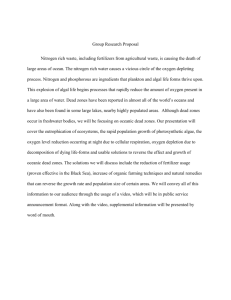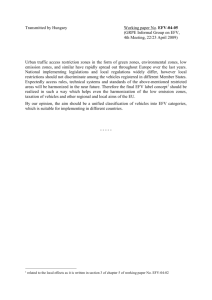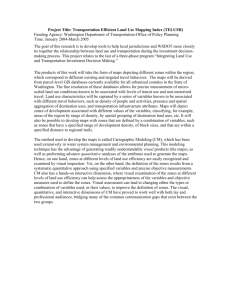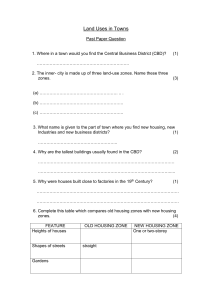THE FOUR WORLD ZONES 8
advertisement
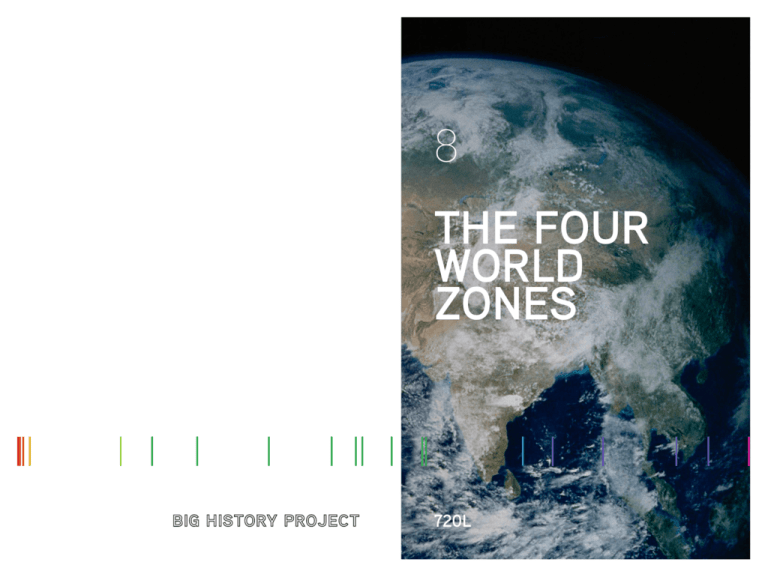
8 THE FOUR WORLD ZONES 720L THE FOUR WORLD ZONES CLIMATE AND GEOGRAPHY DIVIDE HUMAN POPULATIONS By Cynthia Stokes Brown, adapted by Newsela For a brief period, from about 10,000 years ago to about 500 years ago, the rising seas at the end of the last ice age divided the world. Four non-connected geographic zones formed. Four distinct groups of people created their own cultures. They were isolated from each other during this time. 2 3 What are world zones? In his book Maps of Time, David Christian describes how he divides the world into four zones. Many other historians focus on just the two largest world zones. Afro-Eurasia, the “Old World” is the largest. The Americas, the “New World” is the second largest. But Christian lived in Australia. He preferred looking at the whole world to analyze and explain human history. These are the four world zones that he uses: 01 Afro-Eurasia: Africa and the Eurasian landmass, including islands like Britain and Japan 02 The Americas: North, Central, and South America, plus islands like the Caribbean Islands 03 Australasia: Australia and the island of Papua New Guinea, plus neighboring islands in the Pacific Ocean 04 The Pacific Islands: societies such as New Zealand, Micronesia, Melanesia, Hawaii (Antarctica is not considered a world zone because no people lived there.) A world zone is simply a large region of human interaction. It is linked together geographically. Yet, it’s also linked by things like language, religion, trade, or politics. It may have a hundred thousand people living in different types of communities. There may even be millions. Each of the four world zones was its own world for a time. There was no regular contact between the zones. That all changed when Europeans sailed to the Americas in 1492. Today the four separate world zones are gone. Our world is growing ever more connected. The Bering Sea separates Asia and North America, once connected by a land bridge 4 5 6 7 For most of human history, humans existed only in Afro-Eurasia. Homo sapiens migrated to Australasia about 60,000 to 50,000 BCE. We reached the Americas about 20,000 to 15,000 BCE. Humans interacted together in these three areas until the end of the Ice Age. As the Ice Age ended, ice melted. Sea levels began to rise. There was a land bridge connecting Asia and the Americas. But the rising waters covered the land bridge. There never was a land bridge between Australasia and Afro-Eurasia. The only way of getting between those zones was by sea. After the seas rose, traveling between Afro-Eurasia and Australasia became even more difficult. The seas rose sometime after humans reached the Americas from AfroEurasia. Once humans arrived there, the world had three separate zones. The fourth world zone was the Pacific Islands. It developed later. Until humans became skilled enough at sailing, there was no way to reach the Pacific islands. People’s sailing skills didn’t progress enough to reach the islands until sometime in the past 4,000 years. Hence, three of the four world zones existed from about 10,000 BCE to about 1500 CE. The fourth was the Pacific Islands. It was only around from about 2000 BCE to 1500 CE. After 1500, all of the zones became connected through extensive sea travel. From then on, humans were one global network. What the four world zones reveal The rising seas cut off the four groups of humans from each other. Humans remained separate long enough to develop different cultures and civilizations. But they weren’t separate so long that they developed into separate species. How amazing is that? Agrarian civilizations emerged only in the two largest world zones, AfroEurasia and the Americas. They succeeded there for good reason. Those two zones started with advantages over the others. Afro-Eurasia had the greatest advantages. It was extremely large. It had better plants for food and better animals for transportation. These advantages allowed civilization to emerge there several thousand years earlier than in the Americas. This gave peoples from Afro-Eurasia an advantage when they arrived in the Americas. They found the civilizations there quite similar to theirs in structure. The Americas were just earlier in their development. It made conquering the Americas easier. The two smaller world zones had much less room for people to live. There were fewer resources and less people. There weren’t enough people living close together to develop civilization. Agriculture did emerge on the larger Pacific islands, like Hawaii and New Zealand’s North Island. Something very close to states sprung up. But these lands were conquered before civilizations could grow on their own. Would these societies have become states/civilizations if they had not been conquered by people from the larger zones? We can never know. In most areas of the Australasian zone people foraged for food. Farming began when the Europeans arrived. Agriculture did emerge in parts of Papua New Guinea. But the root crops they grew couldn’t be stored easily. Villages were cut off from each other. So, larger types of government didn’t form. On Australia, widespread agriculture never developed. The soil was poor and the plants there weren’t easy to grow. Still, archaeological sites show that the population was increasing in the 2,000 years before Europeans arrived. Comparing human societies is a bit like deciding whether a glass is half full or half empty. You can choose to notice how human societies are different from each other. Or, you can look at their similarities. World history and anthropology courses usually focus on the differences in human societies in the four zones. Big History courses choose to focus on the similarities. It’s easy to see that people living in Afro-Eurasia had a huge head start. They had the earliest human settlements. They were aided by having the greatest geographic area and the largest population. Afro-Eurasia also had the most varied resources. Perhaps most importantly, it had the largest networks of collective learning. Its networks contained more information — and more different kinds of information — than ones in the smaller zones. 8 9 Sources Christian, David. Maps of Time: An Introduction to Big History. Berkeley, CA: University of California Press, 2004. Image credits Asia from space © CORBIS Bering Land Bridge National Preserve, Alaska, USA © Tim Thompson/CORBIS Four World Zones, The Big History Project Articles leveled by Newsela have been adjusted along several dimensions of text complexity including sentence structure, vocabulary and organization. The number followed by L indicates the Lexile measure of the article. For more information on Lexile measures and how they correspond to grade levels: http://www.lexile.com/about-lexile/lexile-overview/ To learn more about Newsela, visit www.newsela.com/about. The Lexile® Framework for Reading The Lexile® Framework for Reading evaluates reading ability and text complexity on the same developmental scale. Unlike other measurement systems, the Lexile Framework determines reading ability based on actual assessments, rather than generalized age or grade levels. Recognized as the standard for matching readers with texts, tens of millions of students worldwide receive a Lexile measure that helps them find targeted readings from the more than 100 million articles, books and websites that have been measured. Lexile measures connect learners of all ages with resources at the right level of challenge and monitors their progress toward state and national proficiency standards. More information about the Lexile® Framework can be found at www.Lexile.com. 10


